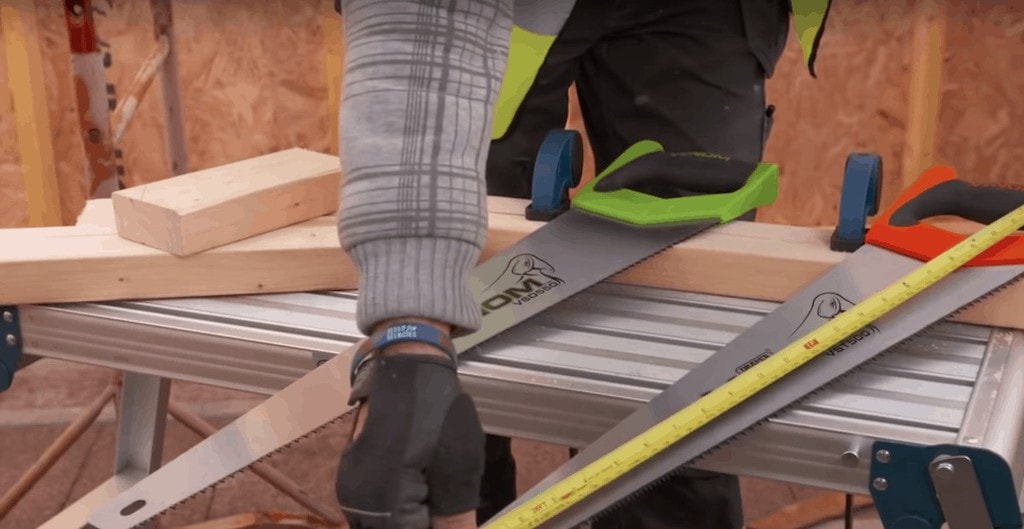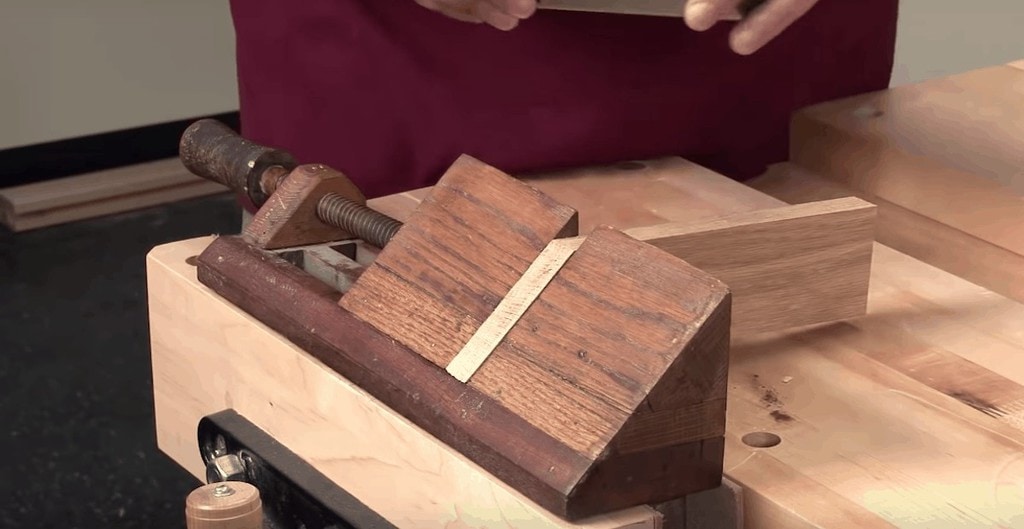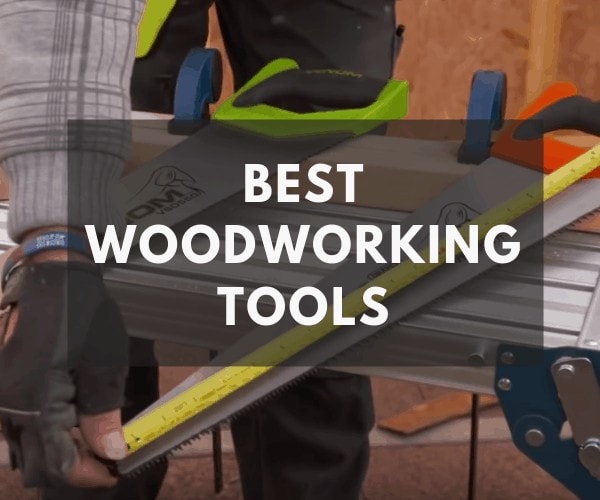
So, your inner Hank Hill or Tim the Tool Man is itching to build something new. That’s fantastic news, but where do you begin? How do you turn that bookshelf idea on Pinterest into reality? The answer is simple: Every carpenter needs the right woodworking power tools.
Without the best woodworking tools, your project ideas turn to dust. Consider this your comprehensive guide to the tools of the trade. From a screwdriver to the ever-essential orbital sander, here’s everything you need to know.
Step 1: Create Your Space
While you’re eyeing up miter and circular saws, you probably have a collection of tools sitting around your home already. Just like your new purchases, those existing tools need a home. More importantly, you need a proper workspace.
Creating your ideal working environment is a matter of personal taste. You don’t need an excessive amount of space, just enough to allow you to work freely and make some noise. What you do need is space to organize your tools, a table to work on, and a quality Shop-Vac.
Sit down and plan out your space before rearranging anything. This is a significant undertaking, and you’ll need to determine what your ideal working environment looks like. From there, simply decide which elements of that environment can fit into the space you have to work with.
Step 2: The Right Tools – Hand Tools
Woodworking power tools are the backbone of this hobby. Having the right tools for the job is vital to completing anything from simple shelves to complicated coffee tables. Off the bat, these are the essential hand tools your workspace needs:
- Bench
- Level
- Planes
- Hammer
- Handsaw
- Chisel
- Clamps
- Nails
- Screws
- and Wood Glue
Consider the above a woodworking starter kit. Each offers the ability to create simple pieces, but you need more power for larger projects. If your project involves creating cutouts in plywood, for instance, then you need a Sawzall to get the job done. If your task requires cross or rip cuts, then a miter saw is a necessity.
Step 3: The Right Tools – Power Tools
Power tools are essential, but they aren’t always cheap. Finding the best jigsaw or circular saw for the money is also challenging at times. So, the first part of step three is to NOT blow all of your money at the local hardware store. Instead, consider the tools you need.
What you need depends entirely on what projects you have on the docket. However, there are must-haves that every woodworker requires. Those are:
- Circular Saw
- Power Drill
- Jigsaw
- Orbital Sander
- Table Saw
- Compound Miter Saw
- and Router
These tools are generally inexpensive compared to others on the market yet allow you to pursue your woodworking dreams without many limitations. As any expert will tell you, start small as a beginner and work your way up to larger projects. Here’s why each of these seven woodworking power tools is essential to starting your new hobby.
The Circular Saw
Circular saws are generally carpentry tools, but they hold their own in the woodworking realm as well. Combined with a clamped on straight edge, they handle the same tasks as table saws with ease. They are also cut through any object ten times faster, like plywood and medium-density fiberboard.
The Power Drill
Honestly, every woodworker has numerous drills. Some are 1/2-inch, while others are 3/8-inch. Some feature keyed designs, while others are keyless. There are dozens of options on the market, but you need at least one standard 1/2-inch off the bat.
Take your choice of corded or cordless here. Whichever works better with your workspace is the right option. We recommend cordless most of the time, but there are instances where only a particular style of a corded drill can accomplish a task.
The other thing you need here is an array of drill bits. If you’re interested at all in woodworking, then you already know what to look for. If not, sets are easy to find in any local hardware store. The more bits you have, the easier it is to tackle a project.
The Jigsaw
Jigsaws are perfect for curved and circular cuts in stock. They aren’t as accurate as a band saw, but they provide more versatility. Choose something with orbital action and an easy way to change the blade. Most importantly, make sure it feels right in your hand.
Variable speed is a must-have for us, which works just like a drill. We also enjoy laser guides for their assistance with cutting. Finally, don’t even think about picking up a jigsaw without vibration reduction. Otherwise, you might as well buy a jackhammer.
The ability to quickly switch out blades is another vital component to selecting a miter saw. T-shanks and U-shanks, the most common types, are relatively simple to switch as needed. Trust us; you want to change the blades as efficiently as possible. Why? Both varieties bend, allowing you to make curved cuts. That bending leads to a quickly degenerating saw blade, however.
The Orbital Sander
Sanding by hand is all well and good, but it’s time-consuming. Sometimes, you just need a power tool to make the most of your time. Orbital sanders create a smooth surface using either regular sandpaper or sanding disks. Like other power tools, they come in plenty of varieties.
Random orbital sanders are a top choice amongst woodworkers for their ability to sand without leaving a pattern. Their random motions eliminate the marks typically left behind by non-orbital versions. Look for variable speeds, dust control, and accessories that help get the job done.
The Table Saw
The table saw is, for all intents and purposes, the heart of the wood shop. It makes the major, defining cuts on nearly every project. On the flip side of that coin, these tools are also the most dangerous. When shopping for a table saw, safety comes first. Look for flash detection before anything else.
After, check out the saw fence. A high-quality fence means superior quality cuts. Next up is the type of switch. Magnetic versions are great if you regularly deal with power outages, while padlock styles are essential for the home with little fingers running about.
Finally, look for a tabletop version with extensions. Extensions have saved the day for us here at The Saw Guy more times than we can count. Don’t have enough room to cut safely? Extend that workspace! We also like DeWALT, Makita, and SKIL to help narrow down your search.
The Miter Saw
Miter saws are powerhouses capable of cutting through robust lumber. They also create more complex angles, which come in handy on all sorts of projects. Like the table saw, a high-quality fence is a must. Miter and bevel adjustments are also essential with this saw as they provide the ability to make complex angles.
Compound or not is up to you here, but one thing we highly recommend is a sliding arm. With a slider, cutting through thicker or wider material is a breeze. Choosing a 10-inch blade is also a safe bet but shoot for the 12-inch if you can afford it. Why? Simple. You have more blade to work with.

The Router
Finally, there’s the router. Picking up a quality router with a stationary base means you’re tackling more tasks than ever before, especially with the wide variety of bits available. We cover more about bits and other features to look for in a router here.
The choice is, as always, a personal matter. Every woodworker likes something a little different. So, choose something you feel comfortable with that can also tackle any project you throw at it.
Step 4: Putting It All Together
It might take time to save up for all of the woodworking power tools you need. That’s perfectly fine. Heck, none of us had a fully equipped shop when we started. So, take the time you need to create your ultimate workspace.
Utilize pegboards, drawers, and other storage necessities to arrange your tools in a way that makes sense to you. There’s no right or wrong answer here. Maybe you want hand tools on one side and power tools on another. Maybe you like things alphabetized. Whatever the case, get your workspace work ready.
Step 5: Reap the Benefits
This is it! Now that you have the necessary woodworking power tools to tackle any project, you can start making that wine rack or plant hanger you’ve been dreaming of. So, get to work and enjoy your new array of cutting and slicing weaponry.
Down the road, we recommend picking up additional power tools to tackle a wider array of projects. A cordless nailer, for instance, sure beats a never-ending sore thumb from missing the nail when hammering. You might want a benchtop drill press or panel saw later on, too.
The point is, expansion happens to every woodworker’s hobby space at one time or another. Until then, familiarize yourself with the tools you have as you begin to master the craft of woodworking.

